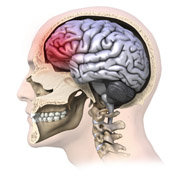Research and Innovation, UNL Office of

Center for Brain, Biology, and Behavior: Faculty Publications
Document Type
Article
Date of this Version
10-1-2017
Citation
2017 Elsevier B.V.
Abstract
Developmental dyslexia is a language-based learning disability characterized by persistent difficulty in learning to read. While an understanding of genetic contributions is emerging, the ways the environment affects brain functioning in children with developmental dyslexia are poorly understood. A relationship between the home literacy environment (HLE) and neural correlates of reading has been identified in typically developing children, yet it remains unclear whether similar effects are observable in children with a genetic predisposition for dyslexia. Understanding environmental contributions is important given that we do not understand why some genetically at-risk children do not develop dyslexia. Here we investigate for the first time the relationship between HLE and the neural correlates of phonological processing in beginning readers with (FHD+, n=29) and without (FHD−, n=21) a family history of developmental dyslexia. We controlled for socio-economic status to isolate the neurobiological mechanism by which HLE affects reading development. Group differences revealed stronger correlation of HLE with brain activation in the left inferior/middle frontal and right fusiform gyri in FHD− compared to FHD+ children, suggesting greater impact of HLE on manipulation of phonological codes and recruitment of orthographic representations in typically developing children. In contrast, activation in the right precentral gyrus showed a significantly stronger correlation with HLE in FHD+ compared to FHD− children, suggesting emerging compensatory networks in genetically at-risk children. Overall, our results suggest that genetic predisposition for dyslexia alters contributions of HLE to early reading skills before formal reading instruction, which has important implications for educational practice and intervention models.
Included in
Behavior and Behavior Mechanisms Commons, Nervous System Commons, Other Analytical, Diagnostic and Therapeutic Techniques and Equipment Commons, Other Neuroscience and Neurobiology Commons, Other Psychiatry and Psychology Commons, Rehabilitation and Therapy Commons, Sports Sciences Commons


Comments
Ann Dyslexia. 2016 October ; 66(3): 337–360. doi:10.1007/s11881-016-0134-2.